Can you picture those students who are constantly searching your classroom walls to find an image that will help them figure out what sound a letter stands for so they can decode unknown CVC words?
Imagine how much time and energy they expend just decoding a single three-letter CVC word!
Think about how this disrupts the process of blending the sounds to read that word.
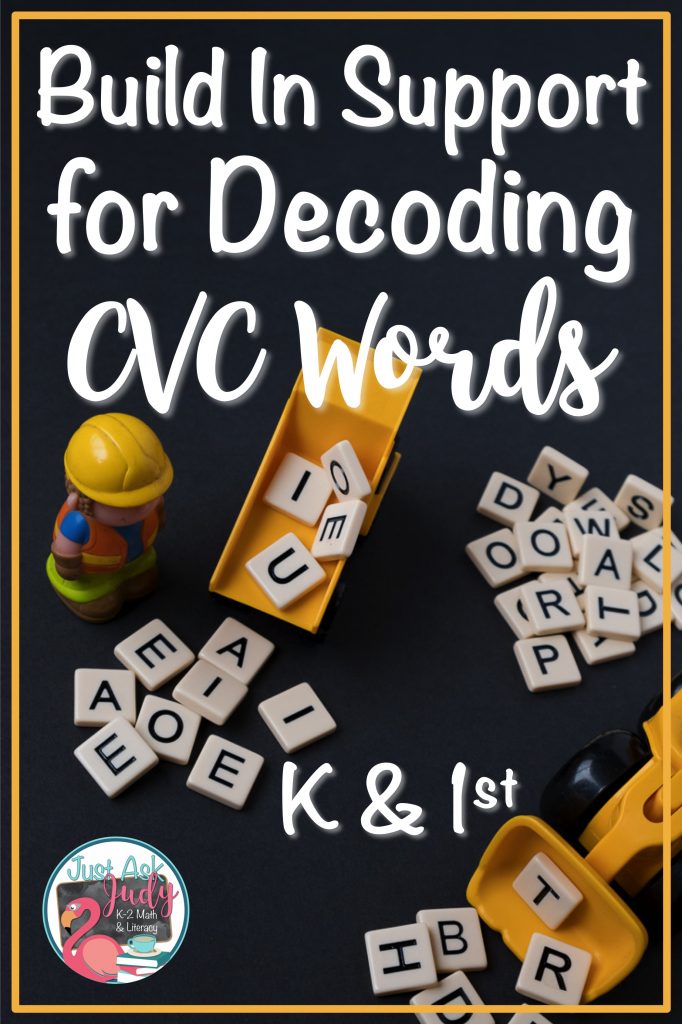
Just like I did, you probably have a set of alphabet cards with letter-sound relationships posted on your wall. Perhaps, you have phonics posters easily viewed from your guided reading table.
Additionally, I used key word picture cards to teach, practice, and review letter-sound relationships.
I even made folders with key word pictures for common vowel patterns that were handy to pull out during reading instruction. But still, so much work for some of my students.
So, why not give them what they need right at their fingertips? I created these Blend to Read CVC Words With Key Word Pictures to do just that.
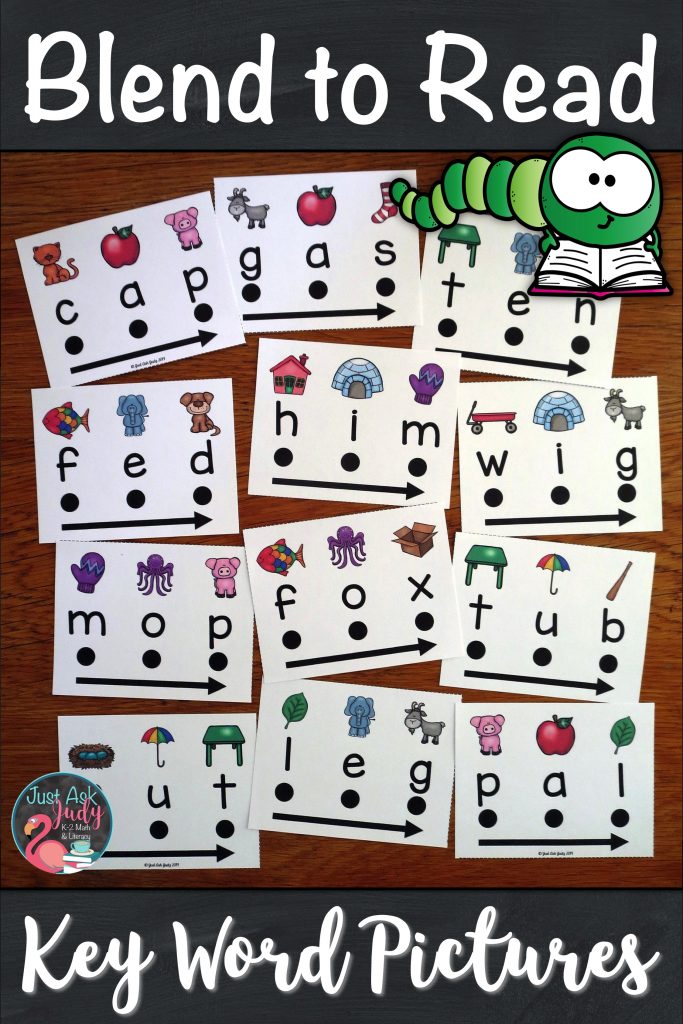
Who Might Benefit From This Phonics Resource?
This set of 180 word cards is designed to support beginning or struggling readers as they learn to decode CVC words in kindergarten and first grade.
Your readers
- need solid letter recognition skills.
- should have prior explicit instruction in letter-sound relationships with single consonant and short vowel sounds.
- should experience some success in segmenting and blending three phonemes.
This resource is perfect for those students who still require a key word picture to recall a letter name and/or its corresponding sound.
It also provides a great springboard for beginning readers to make connections between letters, their corresponding sounds, and how to blend the sounds to decode CVC words, with it all at their fingertips.
Try out the free sample, Blend to Read Short A CVC Words With Keyword Pictures, to decide if this resource is a good fit for your students.
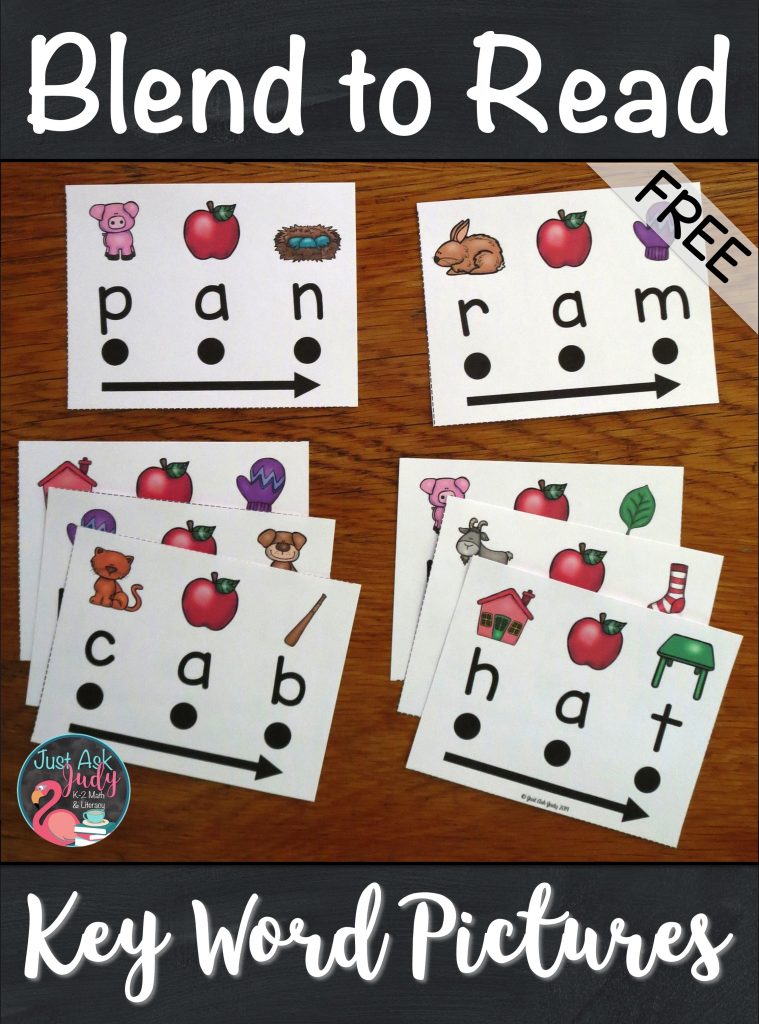
How Do I Prepare the CVC Word Cards?
This is an easy-to-prepare resource!
- Choose color or black/ white keyword pictures.
- Select your pages.
- Print your pages. Use cardstock and laminate for durability.
- Cut each page into fourths.
- Organize and store the cards.
You can organize by single or mixed vowels, by the letters you have introduced, or by common and uncommon words. You know what your students need to learn and how you want to teach it!
How Do I Use Blend to Read CVC Words?
With these cards, there is no mystery to solve or puzzle to figure out. There is a specific key word picture for easy reference above each letter to assist your students with the letter-sound relationship.
I used a consistent set of key word pictures. For example, a is always an apple and m is always a mitten.
Make sure your students are familiar with the key word pictures. Check out this blog post, How to Effectively Introduce Letters and Sounds the Multi-Sensory Way, for more information or simply download a set of free Letter-Sound Picture Cards from my TpT store to get started.
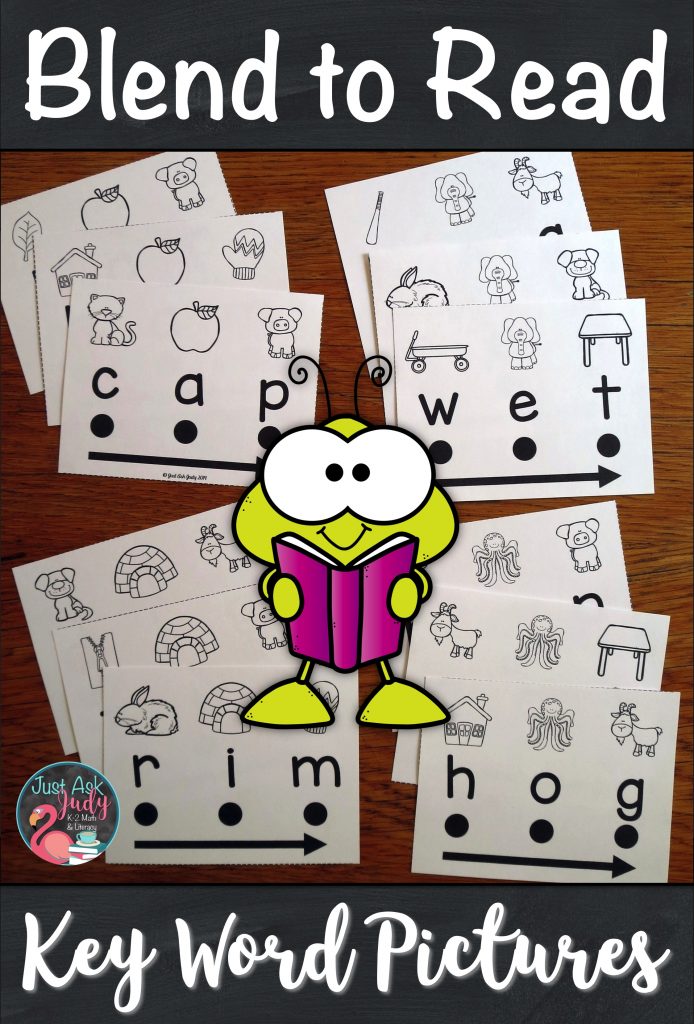
Your students will:
- Touch each dot.
- Say the sound that letter represents.
- Use the keyword picture, for support, as needed, to recall the sound. For instance, they will say t, table, /t/; the letter name, the key word picture, and the sound.
- Blend the sounds together.
- Sweep their finger along the arrow as they read the CVC word.
Try these cards, in kindergarten and first grade, as part of your direct phonics instruction, or in your small guided, intervention, and resource groups. Give your students the visual support they need to produce and blend the sounds to decode those CVC words!
Before You Go…
Click on the highlighted words to download the free Letter-Sound Picture Cards or the sample resource Blend to Read Short A CVC Words With Keyword Pictures.
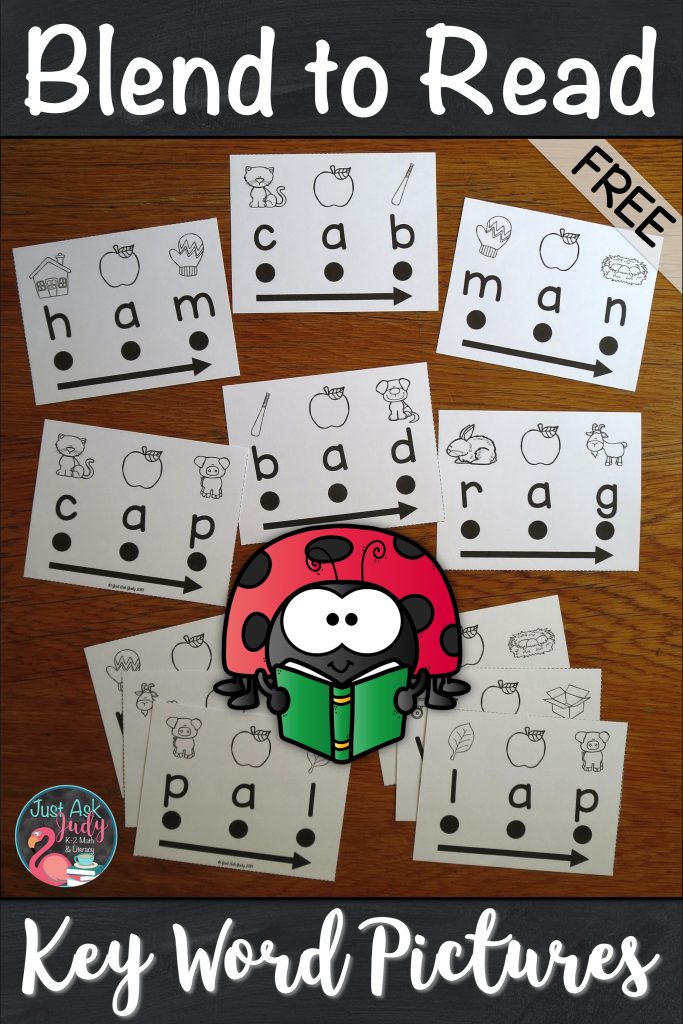
You can also purchase Blend to Read CVC Words With Keyword Pictures from my TpT store.
Read these blog posts for more ideas and resources for teaching CVC words. Then, check out the Phonics Section of my Teachers Pay Teachers store for even more resources.
Title image photo is by Speaking of Images.
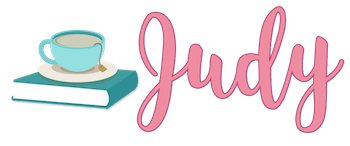
Leave a Reply